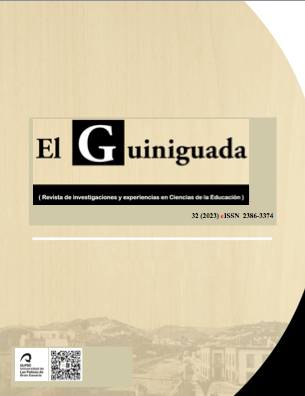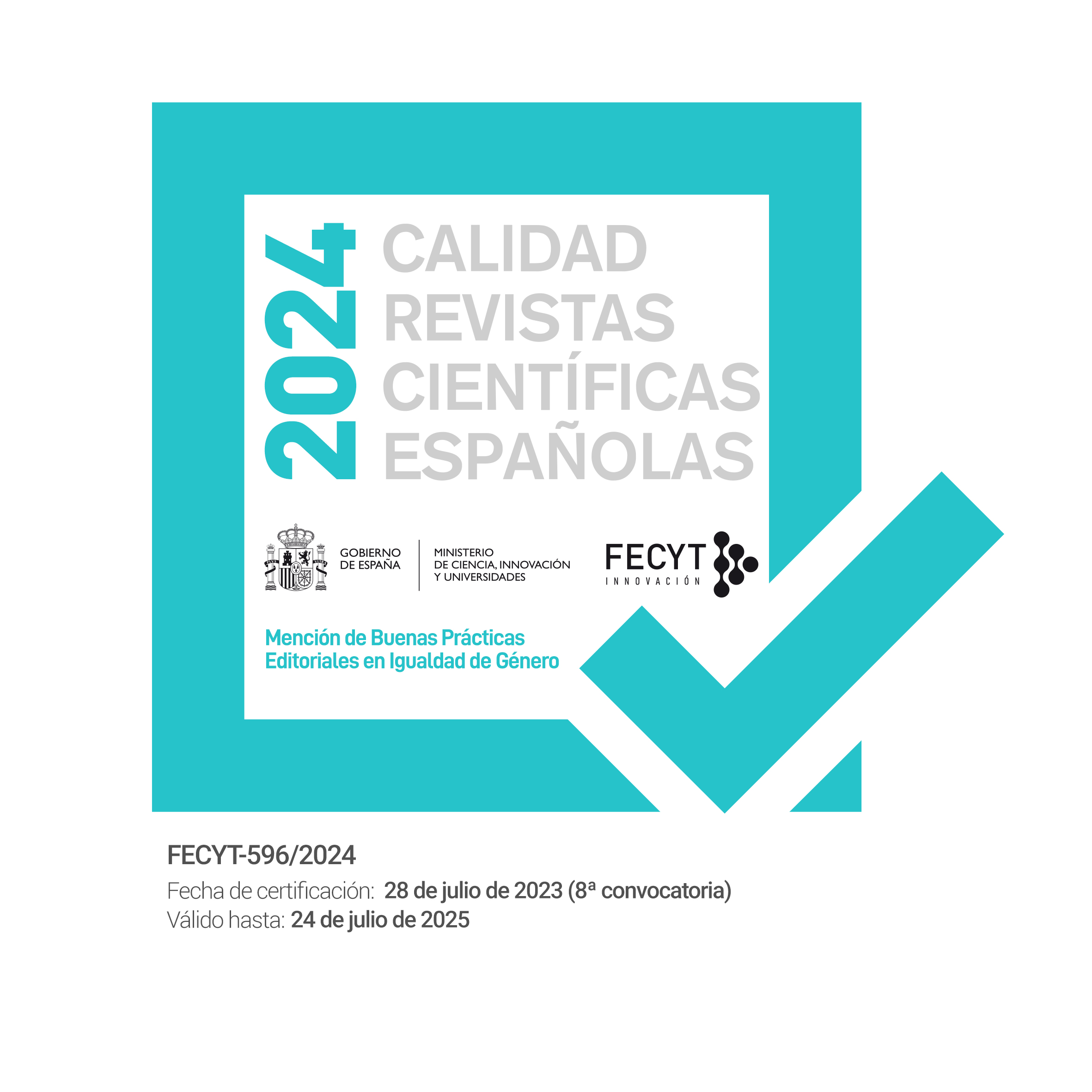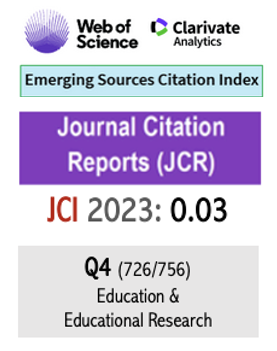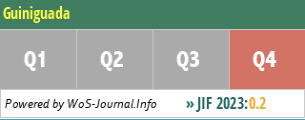"We dance our Isa". Example of a didactic unit for sixth grade of Primary school
doi.org/10.20420/ElGuiniguada.2022.511
Keywords:
DANCE, ISA, CULTURE, PHYSICAL EDUCATIONAbstract
There is a deficient use of dance in educational centres. Specifically the traditional children's dance. For this reason, in this manuscript an exemplification of a didactic unit "we dance our Isa" is carried out for the knowledge and development of the Isa; a Canarian dance that constitutes one of the three most important genres of the musical folklore of the Canary Islands since approximately the year 1700. This didactic unit is adapted to the sixth year of primary school and is based on the area of Physical Education. It includes five sessions based on the natural evolutionary method, which aims to improve pupils' communication and the structuring of their personality. These sessions are integrated into the general annual programme and are in line with the school's educational project. This didactic proposal aims to be a guide for the Physical Education teacher and to contribute to the development of one of the most important cultural manifestations of the Canarian people as well as to the integral development of the pupils.
Downloads
References
Aparicio, J.L. & Tejero, L. (2018). Las danzas urbanas como actividades artístico expresivas generadoras de satisfacción y vivencias emocionales positivas en el aula de Educación Primaria. Revista Red Global de Educación Física y Deporte, 2 (1), 3-8.
Carrillo-López, P. J. (2022). Situación de aprendizaje “emociónate-emocióname” para escolares de primaria. EmásF, Revista Digital de Educación Física, 75 (2).
Carrillo-López, P. J., Guillamón, A. R., & Cantó, E. G. (2021). Juegos tradicionales en las Islas Canarias. Ejemplo de una unidad didáctica. Lecturas: Educación Física y Deportes, 25 (274).
Castro, P. L., & Aubero, A. E. (2007). El movimiento y la danza: su importancia dentro del curriculum de primaria. Educación y futuro: revista de investigación aplicada y experiencias educativas, (17), 149-164.
Decreto 25/2018, de 26 de febrero, por el que se regula la atención a la diversidad en el ámbito de las enseñanzas no universitarias de la Comunidad Autónoma de Canarias.
Decreto 89/2014, de 1 de agosto, por el que se establece la ordenación y el currículo de la Educación Primaria en la Comunidad Autónoma de Canarias.
Díez Álvarez, A., & Viera Díaz, S. (2015). Música canaria, sus bailes y juegos. Sitúate: revista digital de situaciones de aprendizaje.
Durán, L. (1995). La importancia de la danza infantil en el proceso educativo. Tramoya, 42, 107-110.
Recuperado de: http://cdigital.uv.mx/handle/123456789/4164
García-González, L., Sevil-Serrano, J., Abós, Á., Aelterman, N., & Haerens, L. (2019). The role of task and ego-oriented climate in explaining students’ bright and dark motivational experiences in Physical Education. Physical Education and Sport Pedagogy, 24 (4), 344–358. https://doi.org/10.1080/17408989.2019.1592145
Gil Ares, J. (2016). Los contenidos de expresión corporal en el título de grado en ciencias del deporte. Tesis doctoral: Ciencias de la actividad física y del deporte.
Kurt, B. (2020). “Dance saved my life”: Kadir Memis’s Life Story and the (Re)Framing of Identity through Dance. Dance Chronicle, 43 (1), 63-90. https://doi.org/10.1080/01472526.2019.1708140
Ley 6/2014, de 25 de julio, Canaria de Educación no Universitaria. Boletín Oficial de Canarias (152).
López-Pastor, V. y Pérez-Pueyo, A. (2017). Evaluación formativa y compartida en educación: experiencias de éxito en todas las etapas educativas. Universidad de León.
Mantovani, A. (2022). La expresión corporal, un mundo para explorar. EmásF, Revista Digital de Educación Física, 75 (2).
Markula, P. (2020). Dance, movement and leisure cultures. Leisure Studies, 39(4), 465- 478. https://doi.org/10.1080/02614367.2020.1731843
Montesinos, D. (2004). La expresión corporal. Su enseñanza por el método natural evolutivo. Inde.
Motos, T. & Alfonso, V. (2018). Beneficios de hacer teatro en el desarrollo positivo en adolescentes de Valencia. Revista de Investigación en Educación, 16(1), 34-50.
Orden de 21 de abril de 2015, por la que se regula la evaluación y la promoción del alumnado que cursa la etapa de la Educación Primaria.
Padrón-Morán, R. (2018). La Folía canaria. Tradición y sentimiento. Estudio sobre sus orígenes y análisis de sus características musicales y dancísticas hasta la actualidad. TFM. Universidad de Granada.
Piaget, J. e Inhelder, B. (2015). Psicología del niño. Morata.
Real Decreto 126/2014, de 28 de febrero, por el que se establece el currículo básico de la Educación Primaria
Ríos, M. (2016). Manual de educación física adaptada al alumnado con discapacidad. Paidotribo.
Sánchez, M. C., Ortega, F. Z., & Granizo, I. R. (2018). Propuesta didáctica de baile en Primaria. Trances: Transmisión del conocimiento educativo y de la salud, 10(3), 237-252.
Sánchez, Y. & Flores M.J. (2019). Retos de la inclusión educativa. Dificultades de aprendizaje en la diversidad funcional auditiva. Quaderns d'animació i educació social, 30 (2).
Schwarz, A., & Schwarz, A. (2017). Relajación muscular progresiva de Jacobson. Editorial Hispano Europea.
Stokoe, P. (1986). La expresión corporal. Paidós.
Published
How to Cite
Issue
Section
License
Authors who publish with this journal agree to the following terms:
- Authors retain copyright and grant the journal right of first publication with the work simultaneously licensed under a Creative Commons Attribution License that allows others to share the work with an acknowledgement of the work's authorship and initial publication in this journal. You can not make a commercial use of the work. The use derived from the work is also not allowed.
- Authors are able to enter into separate, additional contractual arrangements for the non-exclusive distribution of the journal's published version of the work (e.g., post it to an institutional repository or publish it in a book), with an acknowledgement of its initial publication in this journal.
- Authors are permitted and encouraged to post their work online (e.g., in institutional repositories or on their website) prior to and during the submission process, as it can lead to productive exchanges, as well as earlier and greater citation of published work (See The Effect of Open Access).
















